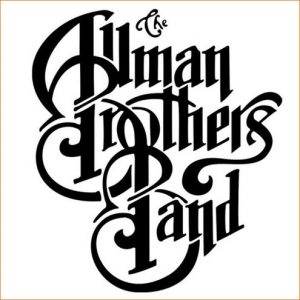By Daniel Durchholz
15 September 2005
St. Louis Post-Dispatch
Quick, who is the best American band of the rock era?
Is it Creedence Clearwater Revival, which condensed elements of rockabilly, country and R&B into a series of irresistibly catchy roots-rock singles in the late 1960s and early ’70s? Perhaps it’s Bruce Springsteen & the E Street Band, whose shows surpass the fervor and intensity of a sweaty summer tent revival. Or maybe it’s the Band, who, though mostly made up of Canadians, captured perfectly the ethos of an America they grew up dreaming about and listening to on the radio.
Is it the Grateful Dead? The Beach Boys? The Velvet Underground? Parliament-Funkadelic? Neil Young and Crazy Horse? The Ramones? Nirvana?
For my money, the Allman Brothers will always be THE great American band.
In their first two incarnations — with Gregg Allman on keyboards and vocals and his brother Duane on guitar, plus second guitarist Dickey Betts, bassist Berry Oakley, and drummers Jai Johanny Johnson (Jaimoe) and Butch Trucks, and later with pianist Chuck Leavell and bassist Lamar Williams — the Allmans surpassed any and all contenders for a variety of reasons:
* They took back American music from the far more popular English blues-rock bands of the day that had usurped it and sold it back to the United States in a less authentic and less nuanced form.
* They were inspired by the blues and country music, of course, but their long, dynamic improvisations, best heard in concert and highlighted by the intertwining guitars of Duane Allman and Betts, reflected their taste for Miles Davis and John Coltrane records.
* Their membership was racially mixed — a fact of no small significance in the years before the New South emerged.
* Said in conjunction with their name, neither “Southern rock” nor “jam band” is pejorative.
The Allmans’ initial albums constitute one of the greatest five-album runs by any artist, American or otherwise: their classic self-titled debut, “Idlewild South,” the epochal live album “At Fillmore East,” “Eat a Peach” and “Brothers and Sisters,” featuring songs such as “Whipping Post,” “In Memory of Elizabeth Reed,” “Midnight Rider,” “Blue Sky,” “Jessica” and “Ramblin’ Man.” That they managed to carry on at such a high level after Duane Allman’s death in a 1971 motorcycle accident speaks volumes about their talent, tenacity and belief in their art.
By the mid-’70s, however, things began to turn. Oakley, too, died in a motorcycle accident only blocks from the scene of Allman’s crash. The band began to splinter as Gregg Allman and Betts fought over control issues and both started solo careers. There were drugs and more drugs. As proof of how many drugs there were, Allman was actually married to Cher for a while.
Reunion attempts came and went and new albums mostly fizzled. The band remained a steady concert draw but didn’t really recapture its creative fire again until guitarist Warren Haynes joined in 1989. Betts departed under duress in 2000, yet they survived that blow as well.
The current lineup includes Allman, Butch Trucks, Jaimoe, Haynes, guitarist Derek Trucks — Butch’s nephew and an amazing slide guitarist — bassist Oteil Burbridge and percussionist Marc Quinones. Once again, the Allman Brothers seem to be recapturing, not merely approximating, all the things that made them special in the first place.
With the jam-band scene in full flower these days, it’s not only important but, indeed, essential that the Allmans exist in a form sufficient to show who did it first and did it right.
You’d expect nothing less from the best American band.



